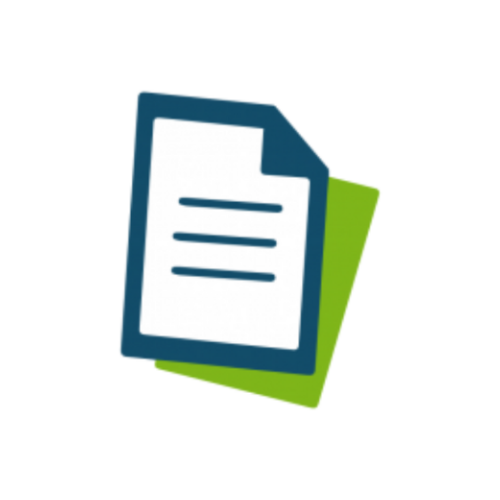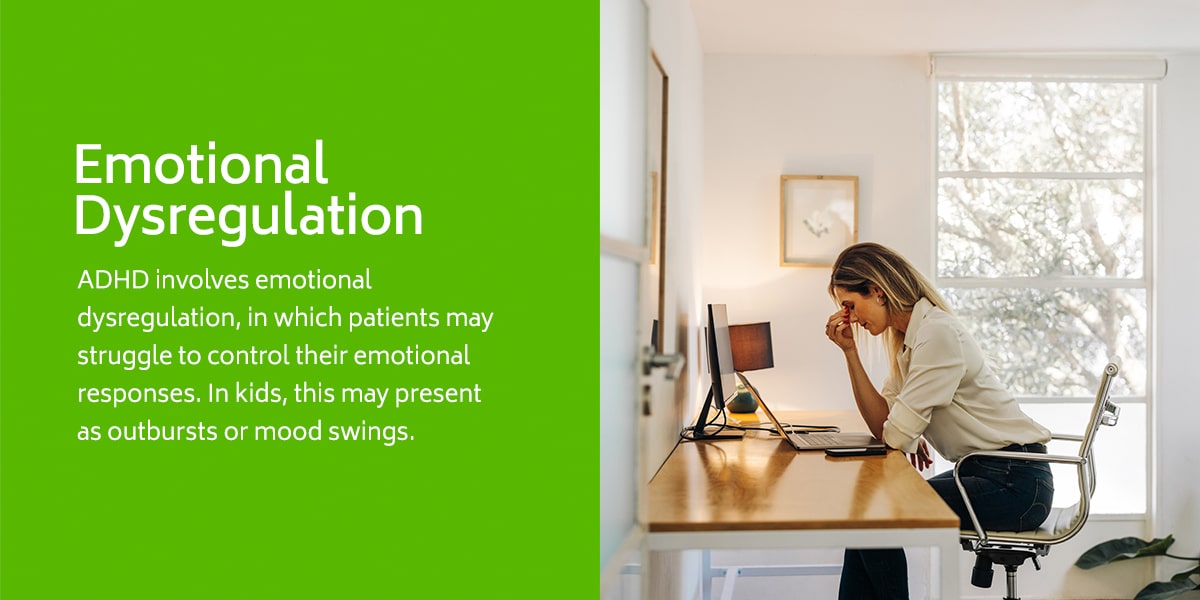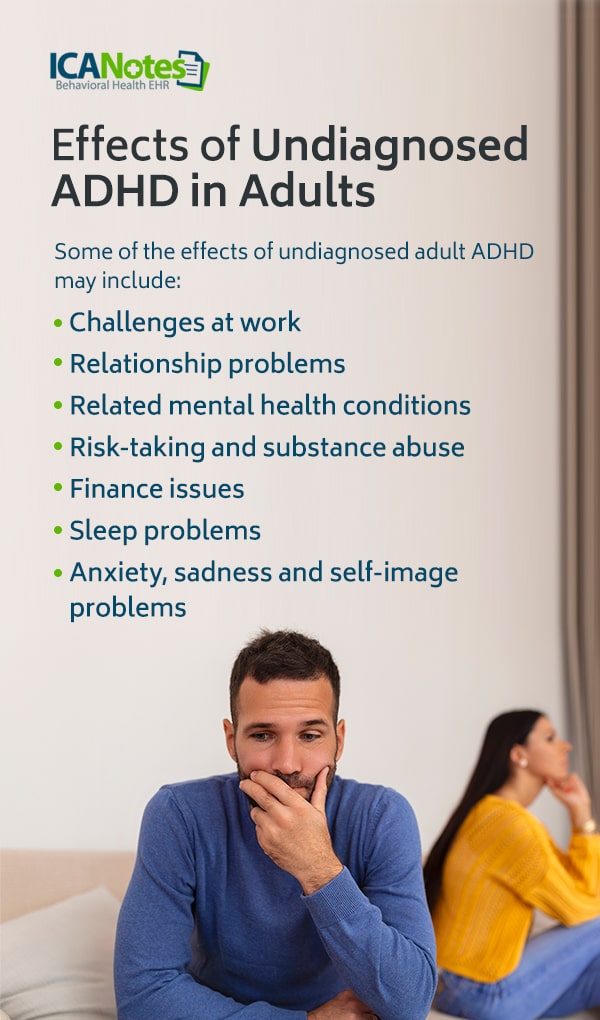Blog > Treatment Strategies > Signs of Untreated ADHD in Adults: How to Spot It Early
Signs of Untreated ADHD in Adults: What Does Undiagnosed Adult ADHD Look Like?
Many adults live with undiagnosed or untreated ADHD without realizing it. The symptoms can be subtle — masked as stress, anxiety, or disorganization — yet profoundly impact daily life. This guide explains what undiagnosed ADHD looks like in adults, outlines the most common signs of untreated ADHD, and explores the personal and clinical consequences of leaving ADHD unrecognized. Understanding these patterns helps clinicians make more accurate assessments and connect patients with effective, evidence-based treatment.

Last Updated: October 15, 2025


What You'll Learn
- Recognize the subtle signs of untreated ADHD in adults, including disorganization, impulsivity, emotional dysregulation, and time blindness.
- Differentiate between undiagnosed ADHD and mood disorders such as anxiety or depression by understanding their distinct underlying mechanisms.
- Understand how ADHD can remain undiagnosed into adulthood, including masking behaviors, gender bias, and misinterpretation of symptoms.
- Identify the risks of leaving adult ADHD untreated, including burnout, financial stress, relationship strain, and comorbid mental health conditions.
- Describe what inattentive ADHD looks like in adults, and why this presentation is often missed in clinical evaluations.
- Outline evidence-based assessment and treatment options for adults with ADHD, including medication, CBT, executive-functioning supports, and psychoeducation.
- Improve diagnostic accuracy and documentation by integrating ADHD screening questions, validated assessment tools, and comprehensive case formulations.
Adult ADHD is often misunderstood. Many people assume ADHD is just a childhood condition marked by hyperactivity — but undiagnosed ADHD in adults can look quite different. Over time, untreated ADHD in adults can cause ripple effects across work, relationships, and mental health.
In this post, we’ll explore what untreated ADHD looks like in adults, signs of untreated ADHD in adults, and key red flags you can watch for when evaluating clients or patients who may have undiagnosed ADHD in adults.
Why ADHD Often Goes Undiagnosed in Adults
- Many adults with ADHD have learned coping strategies and mask symptoms, so their struggles may appear as personality quirks or character flaws rather than a neurodevelopmental condition.
- Misconceptions around ADHD still persist: people think ADHD always presents with hyperactivity, or that someone with ADHD can’t hold down a job or succeed academically — which is not true.
- Comorbid conditions (anxiety, depression, substance use) may overshadow or confound ADHD, leading to delayed or missed diagnoses.
Because of these factors, undiagnosed ADHD in adults is common — and signs of untreated ADHD in adults can emerge subtly over many years.

Key Signs of Untreated ADHD in Adults
Here are some of the frequent indicators to look for when suspecting untreated ADHD in adults or asking what does undiagnosed ADHD look like in adults:
-
Chronic Disorganization and Forgetfulness
Adults with untreated ADHD often struggle with maintaining structure. They may lose or misplace essential items (keys, phone, documents), forget appointments or details, and have many unfinished projects around the house or office. This is one of the more visible signs of untreated ADHD in adults. These symptoms can be a significant source of conflict for friends, family members and coworkers, who may see them as a sign that the patient doesn't care or won't take responsibility.
-
Difficulty Sustaining Focus and Avoiding Bored Tasks
Difficulty focusing is a hallmark of ADHD. In adults, this often shows as struggle with repetitive, tedious, or low-stimulation tasks (e.g. paperwork, data entry). Paradoxically, hyperfocus may also be present — losing track of time when deeply engaged in something of interest — which complicates the picture of undiagnosed ADHD in adults.
-
Restlessness, Tension, Inability to Relax
Even when hyperactivity (running around, constant fidgeting) isn’t obvious, adults with undiagnosed ADHD may report internal restlessness or difficulty sitting still. Their muscles may feel tense. This internal agitation can often be misinterpreted as anxiety, but it can be one of the signs of untreated ADHD in adults.
-
Low Motivation, Procrastination, and Fatigue
Problems with executive functioning can affect the motivation of an adult with ADHD. Initiating tasks, switching between tasks, or sticking with long-term goals may feel overwhelming. Adults with untreated ADHD may delay tasks until the last minute, feel paralyzed by starting, or believe “I need a full day” to complete something minimal. Fatigue may also follow from the mental exertion of masking symptoms, known as “mental masking fatigue.” Problems with low motivation and fatigue can dramatically impact a person with ADHD's productivity. It might be hard for them to keep up at work or keep their house clean, leading to other effects like work performance and relationship problems.
-
Poor Time Management / "Time Blindness"
People with ADHD may misjudge how long a task will take, chronically run late, or lose track of time altogether. This phenomenon, sometimes called time blindness, is one of the more distinctive signs of untreated ADHD in adults.
-
Emotional Dysregulation
Mood swings, irritability, frustration tolerance issues, and difficulty “turning off” emotional responses can show up in adults. These symptoms often lead to misdiagnoses (e.g. bipolar disorder, borderline traits) unless ADHD is considered. Emotional dysregulation is an important clue when asking what does undiagnosed ADHD look like in adults.

-
Impulsivity in Decision-Making and Behavior
Unlike children who may blurt out or interrupt, adults might exhibit impulsivity by:
-
- Overspending or shopping sprees
- Risky sexual behavior
- Rapid job changes
- Impulsive exits or entries in relationships
- Substance use, binge eating, or gambling
These behaviors are some of the signs of untreated ADHD in adults and often co-occur with undiagnosed ADHD in adults.
-
Chronic Indecisiveness and Overthinking
Many adults with undiagnosed or untreated ADHD feel paralyzed by choices, overanalyze decisions, fear making mistakes, or defer decisions to others.
Effects and Secondary Consequences of Untreated ADHD in Adults
Unsurprisingly, this long list of potential symptoms can affect many parts of a patient's life. An undiagnosed person has no clear answer as to why everyday tasks are so difficult for them. This disorder is pervasive, with symptoms that can affect everything from performance at work and relationships to the patient's sleep quality and self-image.
When ADHD goes untreated, the consequences can accumulate over time. Some frequent downstream impacts include:
-
Career Challenges and Employment Instability
The typical 9-to-5 workday is not conducive to many ADHD symptoms. Tasks that require sustained focus, strategic planning, or consistent follow-through may be particularly challenging. Some individuals cycle through jobs or leave roles abruptly.
-
Strained Relationships and Social Repercussions
Missed appointments, broken promises, disorganization, emotional outbursts, and inattentiveness can frustrate partners, friends, or family. This can lead to misunderstandings and isolation. Without understanding the role of ADHD, many people are quick to call the person with ADHD lazy or selfish. People with ADHD might even avoid social situations out of fear that they will become distracted, interrupt others or lose focus during conversations.
-
Comorbid Mental Health Conditions
It’s estimated that around 80% of adults with ADHD have at least one comorbid behavioral health diagnosis (e.g. anxiety, depression, substance use). This complicates the clinical picture and can make ADHD harder to recognize. Someone with anxiety might understand the importance of tasks like getting regular exercise and making it to appointments on time, but their forgetfulness and time management difficulties could make it almost impossible to adhere to these goals.
-
Financial Trouble and Impulsive Spending
Impulsivity, procrastination, and disorganization may lead to mismanaged budgets, late payments, debt accumulation, or risky purchases.

-
Sleep Disturbances
Difficulty falling asleep, insomnia, racing thoughts, or being unable to wake can accompany untreated ADHD. Poor sleep further worsens attention, mood, and executive function.
-
Low Self-Esteem, Guilt, and Identity Frustration
Constantly struggling with tasks others seem to manage easily can lead to chronic shame, negative self-talk, and identity confusion: “What’s wrong with me?” Many adults living with undiagnosed ADHD may cycle through periods of self-doubt, which exacerbates emotional distress.
Many adults with undiagnosed or untreated ADHD feel paralyzed by choices, overanalyze decisions, fear making mistakes, or defer decisions to others.
What to Do If You Suspect ADHD is Undiagnosed or Untreated
When you or your patient/client is showing signs of untreated ADHD in adults or you wonder what does undiagnosed ADHD look like in adults, here are next steps:
-
Suggest a Formal ADHD Assessment / Testing
Use validated screening tools (e.g. Adult ADHD self-report scales, executive function assessments, computerized attention tests) or refer to specialists (neuropsychologists, psychiatrists) who specialize in ADHD.
-
Educate and Normalize ADHD Awareness
Many adults assume ADHD is a childhood disorder or that they don’t “fit” the stereotype. Explaining how undiagnosed ADHD in adults manifests — and emphasizing that untreated ADHD in adults has long-term costs — can help reduce stigma and open the door for acceptance.
During patient education, be sure to address any misconceptions or questions the patient may have. For instance, you might tell the patient that:
-
- Hyperactivity isn't always a symptom.
- ADHD can present differently in women and men.
- People with ADHD can have good grades and successful careers.
- Many people with ADHD do not “grow out of it” as they get older.
Patient education can also include self-help strategies that allow your client to start building their ADHD toolbox. You might discuss ADHD-friendly tactics for staying organized, reducing distractions, tackling big projects, and improving sleep hygiene.
-
Consider a Multi-Modal Treatment Approach
Treatment rarely relies only on medication. For adults with ADHD, consider combining:
-
- Medication (stimulants, non-stimulants) where appropriate. Adults with ADHD now have several medication options. Stimulants include amphetamine- and methylphenidate-based medications like Adderall and Ritalin, but many other novel stimulants are also available. Non-stimulant medications can also help patients who do not want to or cannot take stimulants. Some antidepressants can help certain individuals manage adult ADHD symptoms or the symptoms of comorbid behavioral health disorders. A psychiatrist or other prescribing clinician will help find the right medication for the client.
- Cognitive-behavioral therapy (CBT), particularly adapted for ADHD. Often called the gold standard for ADHD psychotherapy, cognitive-behavioral therapy (CBT) can help many patients manage their disorder through psychoeducation, coping skills and adaptive thinking. Other popular psychotherapeutic approaches include mindfulness-based cognitive therapy (MBCT) and dialectical behavioral therapy (DBT). MBCT can be particularly helpful in managing emotional dysregulation.
- Coaching or skills-based interventions (e.g. executive function coaching)
- Mindfulness, stress management, and organizational strategies — Mindfulness activities, like meditation and breathing exercises, can help people with ADHD feel less reactive and more aligned with the present moment. Patients might improve their focus, executive functioning and emotional regulation.
-
Review and Reassess Cormorbid Conditions
If the patient already carries diagnoses (e.g. anxiety, depression), consider how ADHD overlap may modify treatment planning. Sometimes ADHD underlies or exacerbates existing symptoms.
-
Monitor and Adjust Over Time
Adult ADHD is not “fixed” after one intervention. Reassess periodically, adjust strategies, and reinforce skills over time.
FAQ: Undiagnosed Adult ADHD
How ICANotes Helps Clinicians Diagnose and Treat Adult ADHD
Identifying and managing adult ADHD requires structured evaluation, careful documentation, and continuity of care. ICANotes simplifies each step of this process so clinicians can focus more on clinical insight and less on administrative tasks.
Streamlined ADHD Assessment and Documentation
ICANotes includes pre-built templates for psychiatric evaluations, progress notes, and treatment plans that guide clinicians through symptom documentation consistent with DSM-5-TR criteria. Customizable checklists and narrative prompts help ensure key areas — such as attention, impulsivity, executive functioning, and emotional regulation — are addressed. This structured workflow helps support diagnostic accuracy and medical necessity during utilization reviews.
Built-In Rating Scales and Progress Tracking
Clinicians can incorporate evidence-based ADHD rating scales directly into patient records and track progress over time. Results are automatically stored in the patient chart, reducing data entry and making it easier to monitor treatment outcomes, symptom changes, and medication efficacy.
Medication Management and E-Prescribing
ICANotes’ integrated e-prescribing tools simplify medication tracking, refills, and controlled substance monitoring for ADHD treatment. Clinicians can view medication history, set follow-up reminders, and document response patterns in just a few clicks — improving both patient safety and compliance.
Collaborative Care and Behavioral Insights
ICANotes supports collaboration across care teams — psychiatrists, therapists, and primary care providers — with secure internal messaging and shared treatment notes. This ensures that ADHD treatment plans align across disciplines and that comorbid conditions such as anxiety or depression are managed effectively.
Efficient Progress Notes for Ongoing Treatment
With ICANotes, clinicians can generate complete, billable notes in minutes using point-and-click tools that capture interventions, responses, and outcomes. Built-in readability and AI enhancement tools help maintain clarity and professionalism while reducing documentation fatigue — a major benefit for busy practices treating adults with ADHD.
Streamline ADHD Care with ICANotes
This is the main blog copy
Start Your 30-Day Free Trial
Experience the most intuitive, clinically robust EHR designed for behavioral health professionals, built to streamline documentation, improve compliance, and enhance patient care.
- Complete Notes in Minutes - Purpose-built for behavioral health charting
- Always Audit-Ready – Structured documentation that meets payer requirements
- Keep Your Schedule Full – Automated reminders reduce costly no-shows
- Engage Clients Seamlessly – Secure portal for forms, messages, and payments
- HIPAA-Compliant Telehealth built into your workflow
Complete Notes in Minutes – Purpose-built for behavioral health charting
Always Audit-Ready – Structured documentation that meets payer requirements
Keep Your Schedule Full – Automated reminders reduce costly no-shows
Engage Clients Seamlessly – Secure portal for forms, messages, and payments
HIPAA-Compliant Telehealth built into your workflow
Related Posts
About the Author
Dr. October Boyles is a behavioral health expert and clinical leader with extensive expertise in nursing, compliance, and healthcare operations. With a Doctor of Nursing Practice (DNP) and advanced degrees in nursing, she specializes in evidence-based practices, EHR optimization, and improving outcomes in behavioral health settings. Dr. Boyles is passionate about empowering clinicians with the tools and strategies needed to deliver high-quality, patient-centered care.








